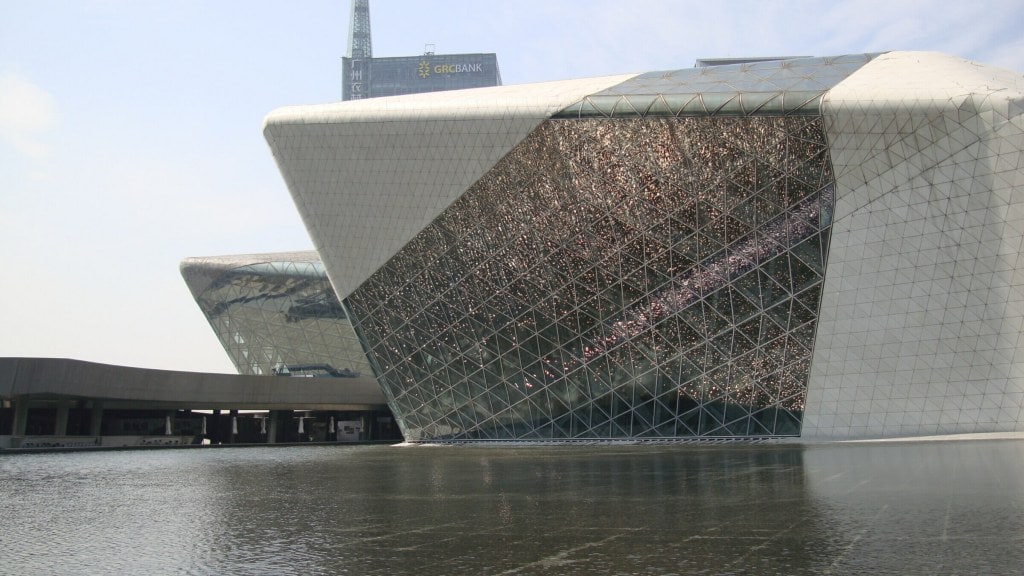Zaha Hadid, the late legendary architect, is best known for her impressively curvy and geometrically shaped structures of the future, which she created using complicated materials like steel, concrete, and glass. One of the many accolades Hadid received over the course of her nearly three-decade career was the nickname “the Queen of the Curve,” a reference to the innovative curves of her buildings. Originally from Baghdad, Iraq, she travelled to London in 1972 to enrol in the prestigious Architectural Association School of Architecture. She graduated in 1977 with the Diploma Prize and was hailed as “a planet in her own orbit” by her professor and renowned Dutch architect Rem Koolhaus. The British Iraqi architect Zaha Hadid established her firm, Zaha Hadid Architects, in 1979, just two years after graduating from the prestigious architectural school.
When Hadid won the Pritzker Architecture Prize in 2004, she made history. The first woman to receive the award commonly referred to as “the Nobel Prize of architecture.” Hadid was honoured twice by the Royal Institute of British Architects with its annual Stirling Prize for “excellence in architecture” in 2010 and 2011.
The architect’s namesake practice, which continues to operate out of London, has finished several of the unfinished projects she left behind. Here is a look back at some of Zaha Hadid’s most recognisable works this side of the century. She has left us with an incredible catalogue of unforgettable modern wonders from all corners of the globe.
Wolfsburg’s Phaeno Science Centre (2005)

The Phaeno scientific centre “condenses a lot of the things that have been in my work for a long, long time,” Hadid stated. At the same time, a critic called it “an extraordinary, exciting concrete and steel tornado of a building – somewhere you go to experience the operatic force of space.” Its 154-meter length floats in the air thanks to the huge concrete cones on which it rests. The structure is a cathedral of jagged angles, looming curves, fragmented planes, and bold protrusions.
Bridge Pavilion, Zaragoza (2008)


The Phaeno scientific centre “condenses a lot of the things that have been in my work for a long, long time,” Hadid stated. At the same time, a critic called it “an extraordinary, exciting concrete and steel tornado of a building – somewhere you go to experience the operatic force of space.” Its 154-meter length floats in the air thanks to the huge concrete cones on which it rests. The structure is a cathedral of jagged angles, looming curves, fragmented planes, and bold protrusions.
Guangzhou opera house, Guangzhou (2010)


Hadid described the $130 million building as looking “like stones in a stream polished by erosion.” Here, the structures blend in with its gorgeous riverside location. The flowing glass design earned its a reputation as one of its most aesthetically compelling venues. In this case, however, the “erosion” proved more severe than anticipated, with cladding panels beginning to peel off less than a year after the building opened.
Abu Dhabi’s Sheikh Zayed Bridge (2010)

Also from the year 2010, this 842-metre bridge, hangs on Abu Dhabi’s horizon like a fixed scribble. With its sweeping arches and curves, it is designed to evoke the undulation of sand dunes. The $200 million edifice spans the Maqtah waterway that was named after the country’s chief architect and former president Sheikh Zayed. Locals argue that the structure is at its best at night, when coloured lighting illuminate its spine.
London Aquatics Center (2011)


This massive indoor swimming facility, designed by Hadid in 2004, was built in preparation for the 2012 Summer Olympics and Paralympics. While only built in 2012, the London Aquatics Center hosted several swimming, diving, and synchronised swimming events during the 2012 Olympic Games. The undulating roof of the centre “sweeps up from the ground as a wave,” as Zaha Hadid Architects describe it, to evoke the fluidity of moving water. Six hundred and twenty-eight glass panels line the ceilings and walls of the main pool sections, flooding them with natural light.
Heydar Aliyev Cultural Centre, Baku (2012)

Located in Baku, the capital of Azerbaijan, this 619,000-square-foot building earned the London Design Museum award in 2014 thanks to its sweeping curves and fluid layout. The roof gently folds to protect the museum, auditorium, and multi-purpose hall.








